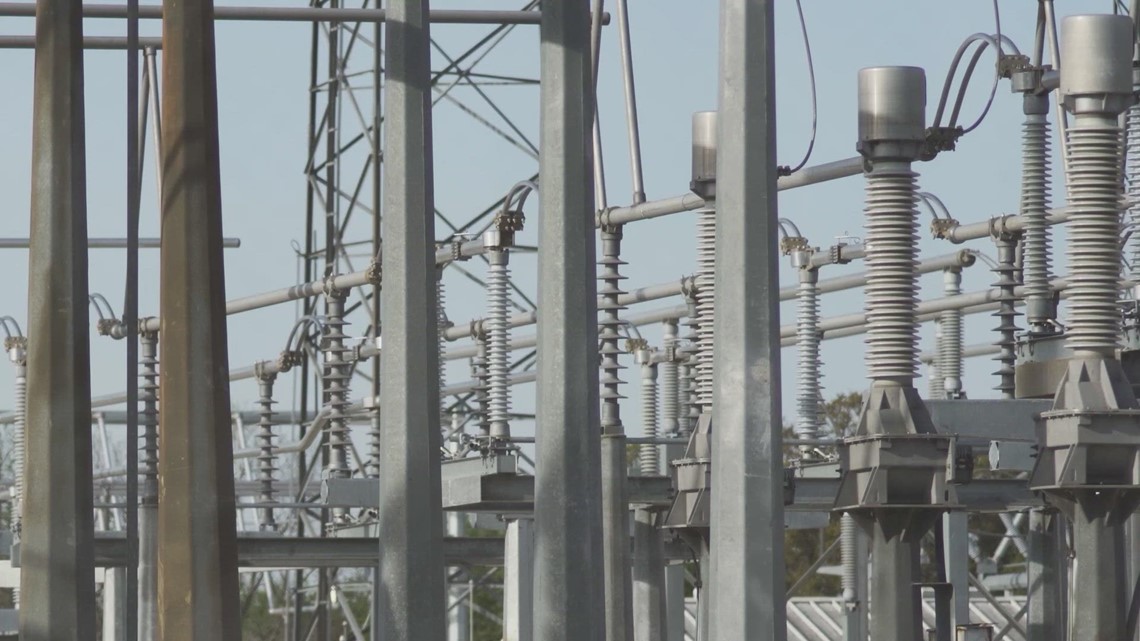
Ahead of the frigid weather, the Electric Reliability Council of Texas (ERCOT) on Wednesday issued a weather watch for January 15-17.
DALLAS — Texas is getting its fill of winter weather to start 2024, beginning with snow and blizzard conditions in the Panhandle.
Up next? An arctic front that could drop some temperatures in the state into the single digits, beginning Sunday night into Monday.
Ahead of the frigid weather, the Electric Reliability Council of Texas (ERCOT) on Friday issued an extension of its weather watch to have it run Jan. 14-17. ERCOT on Wednesday had issued the watch to begin Jan. 15.
The grid operator cited “forecasted extreme cold weather,” along with “higher electrical demand and the potential for lower reserves.”
But ERCOT isn’t yet asking residents or businesses to take action. The agency still expects the power grid conditions to remain normal during the cold weather, which is expected to dip into Texas on Sunday and cause widespread freezing temperatures early next week.
“ERCOT continues to monitor conditions closely and will deploy all available tools to manage the grid, continuing a reliability-first approach to operations,” ERCOT officials said in a statement.
This year, ERCOT began issuing varying levels of watches and warnings ahead of situations that might stress the grid. The weather watch is the least urgent of those notifications.
If the forecasted energy demand is coupled with a lower energy supply, ERCOT could issue a “voluntary conservation notice,” asking Texans to voluntarily conserve power and asking government agencies to reduce energy use.
The next two levels are a conservation appeal and then an “energy emergency alert.”
Current weather forecasts favor the grid. The grid operator expects wind turbines and solar panels to produce ample electricity during peak demand, likely Tuesday around 8 a.m.
Unlike 2021’s Winter Storm Uri and 2022’s Winter Storm Elliot, the coming cold front is not expected to blanket the state in wintery precipitation.
“It’s not going to be cold for as long,” University of Texas energy researcher Dr. Joshua Rhodes said. “There’s going to be a couple of critical hours there, not multiple days.”
After Uri, which officially killed 246 and forced rolling outages, Texas lawmakers mandated sweeping changes to grid operations. Since 2021, ERCOT has inspected 1,774 generation and transmission facilities to ensure compliance with tighter regulations.
The grid operator plans 450 more inspections this winter, meaning it’s ahead of the schedule lawmakers set two years ago.
“They’re basically looking for whether the power plants are doing the required winterization upgrades and maintenance,” Rhodes said. “Sometimes, it’s just a small tear in a piece of insulation that can lead to a pipe freezing that can take down a whole power plant.”
A key weatherization deadline passed on Dec. 1, requiring power plants to prepare so they’re able to operate in lasting, frigid conditions. In the Dallas-Fort Worth area, generators are required to ready themselves for a 72-hour average minimum wind chill of .5 degrees below zero.
This is the first significant cold snap since those new weatherization requirements took effect.
Texans are likely to break a winter electricity demand record next week, though the forecast waffled Wednesday.
Last year’s January peak demand for energy usage was 65,632 megawatts, while the all-time demand record was 85,508 megawatts on Aug. 10, 2023, according to ERCOT.
Original News Source
Running For Office? Conservative Campaign Management – Election Day Strategies!
